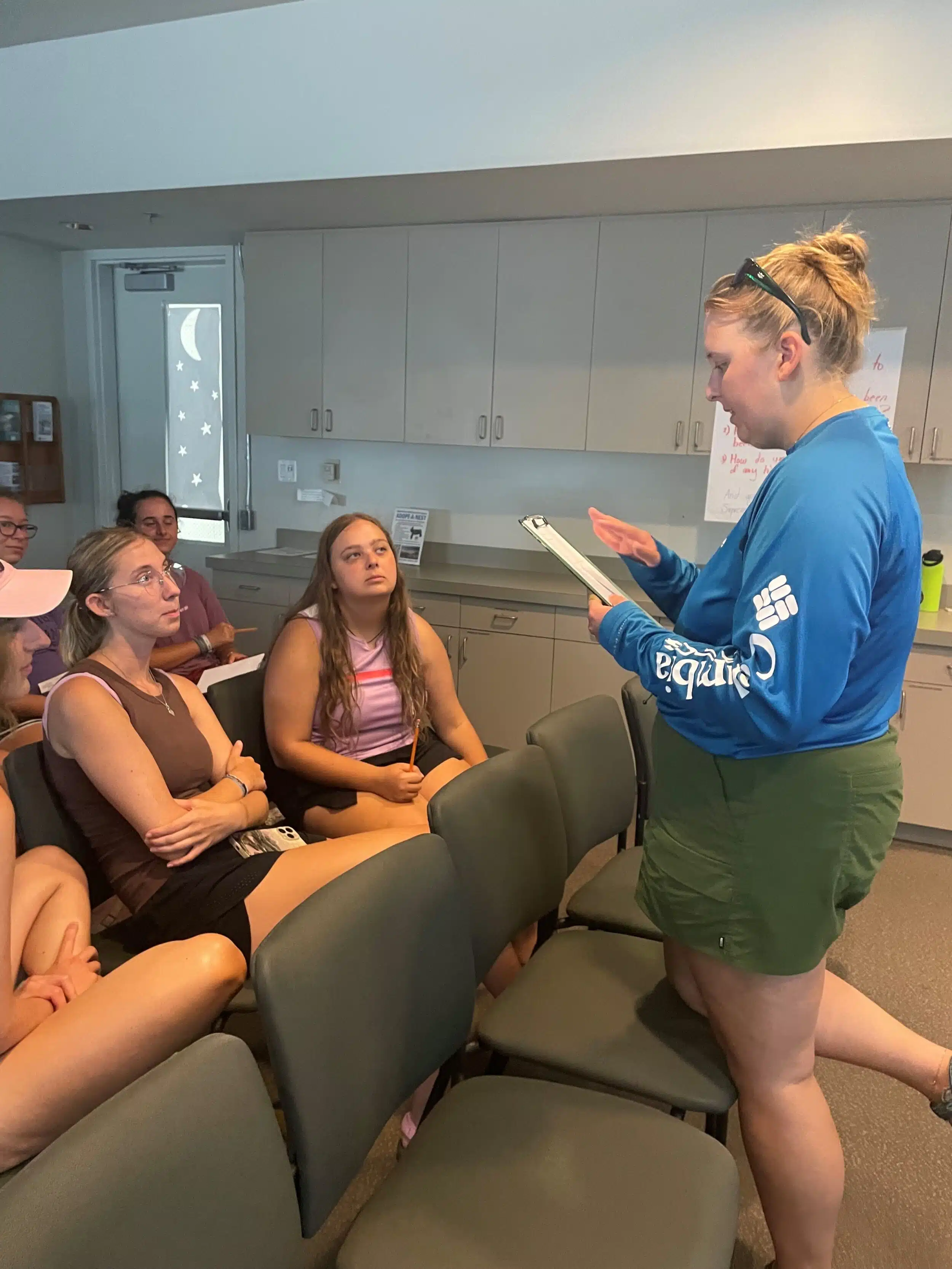OysterCatcher Summer 2024

Research Team Hosts USDA Soil Science Group
The Reserve’s Research team hosted a site visit with staff from the United States Department of Agriculture (USDA). This visit will be the first of many – they will be conducting a Coastal Zone Soil Survey (CZSS) in the Apalachicola River and Bay area over the next several years. USDA staff toured potential sampling sites, discussed logistical considerations, and met with stakeholders as well as other interested parties during their stay.
Information obtained from the CZSS will aid in developing new mineral and organic soil series and establish a baseline of soils data for the area. In addition, the survey information can be used to generate data regarding blue carbon storage, sea level rise, saltwater intrusion, and inform future restoration projects. We are planning an October start for the field surveys and the Reserve will be working closely with USDA to generate this important information about the area.
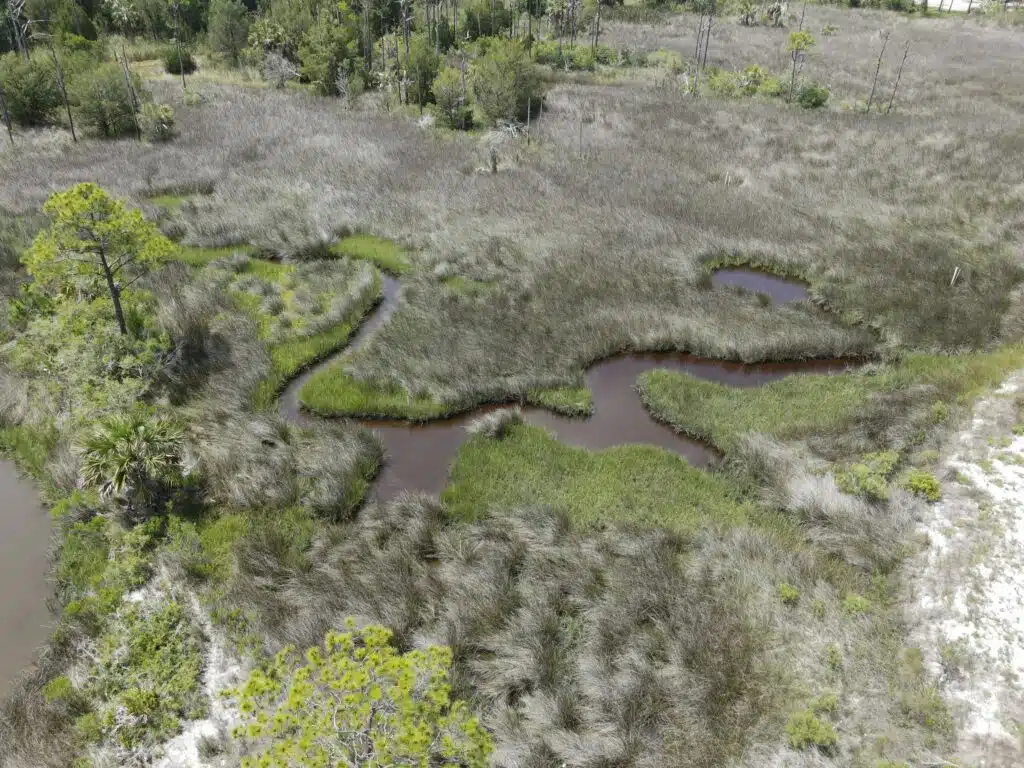
Prepping for Sea Turtle Season
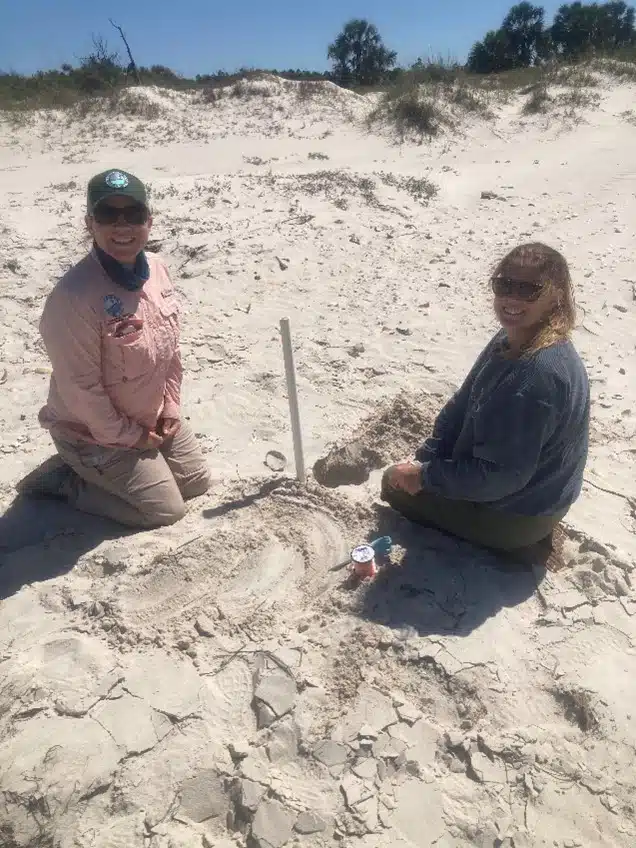
Sea turtle season is here! The Reserve’s Stewardship team spent much of spring preparing supplies and testing out the new FWC nesting app. The app will be used to streamline data collection in the field and help QAQC the data collected. All staff helping with sea turtle nesting have completed the required trainings from FWC.
Prior to the start of sea turtle nesting season, Stewardship staff buried temperature loggers in the beaches of St. George and Little St. George Island. These loggers will measure the temperatures at the same depths where sea turtles bury their eggs and provide us information about the incubation environment these eggs are experiencing. Sea turtles experience temperature-dependent sex determination, which means the temperatures they experience around the middle of their incubation will determine if an egg produces a male or female turtle. Analysis of previous years data indicates temperatures may vary significantly throughout the summer season as well as from year to year.
Summer Stewardship Intern
Jennie Hudson joined Reserve’s Stewardship team at the end of May. Since joining the team, she has hit the ground running, quickly becoming familiar with stewardship projects and lending a hand whenever and wherever possible. Growing up in Gaithersburg, Maryland, Jennie attended Stevenson University. There, she was on the swim team and earned a bachelor’s degree in environmental science. Jennie joined Reserve shortly after graduating. Prior, Jennie worked as a trail crew member in the Modoc National Forest in northern California and conducted independent research on eliminating invasives species. She has a great love of the outdoors and is excited to learn about the opportunities Reserve has to offer.
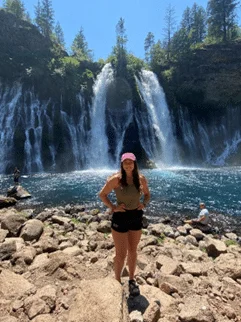
Summer Research Intern
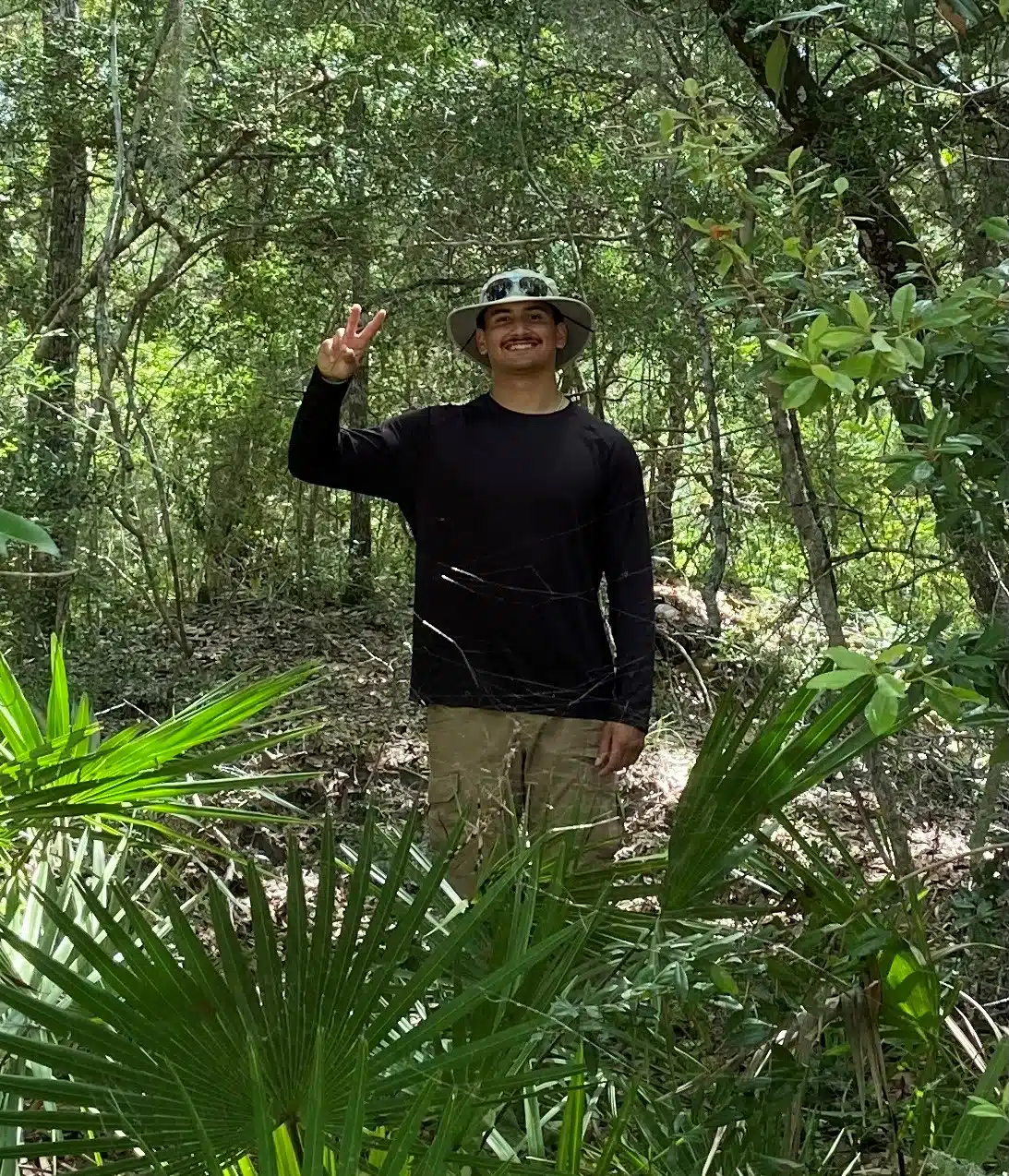
Reserve’s summer research intern, Will Eltringham, joined the team in May. Will is originally from Boca Raton in southeast Florida. Will’s passion for marine life and the environment led him north to the Massachusetts Maritime Academy where he is pursuing a B.S. in Marine Science, Safety, and Environmental Protection along with a minor in marine biology. He will be entering his junior year at the conclusion of his internship.
Will assists the research team in a variety of field, lab, and office tasks. From deploying dataloggers and collecting nutrient samples to identifying fish and invertebrates in Apalachicola Bay, Will is eager to learn and apply himself. Will is especially interested in water quality and has been a big help in the calibration and maintenance of data sondes. We greatly appreciate his efforts this summer!
Monarch Tagged By Reserve Recovered 1,700 Miles Away
A monarch butterfly tagged by the Reserve was recovered 1,700 miles away in the Sierra Chincua Sanctuary in Mexico in March 2024! The female monarch was tagged with the help of 7th graders from Franklin County Schools and the ABC School. Each fall students come to the Reserve Nature Center to learn about taxonomy, the life stages of the insects, and migration patterns. As part of the class, they tag and release monarch butterflies. Over the past 23 years, the Reserve has tagged 21,683 monarch butterflies.
Monarch butterflies undertake one of the longest migrations of any insect species, traveling thousands of miles from North America to central Mexico for wintering. The tags are part of the Monarch Tagging Program, a large-scale community science project started in 1992 and run by Monarch Watch https://www.monarchwatch.org/ Institutions or groups purchase the tags, tag the monarchs, then record and report data from the tag. The project generates income to pay for the program and for the collection of the tags in Mexico. Recovered tags are rewarded with cash to incentivize the tag return. The Monarch Tagging Program helps answer questions about monarch migration, mortality, and geographic distribution. Each fall upwards of 250,000 tags are used across this US.
The successful migration of the tagged monarch highlights the incredible endurance and navigational abilities of these insects. The program not only enhances students' understanding of biological sciences but also actively involves them in conservation efforts, fostering a sense of stewardship and interest in wildlife.
For more information on the Monarch Tagging Program and to get involved, visit Monarch Watch.
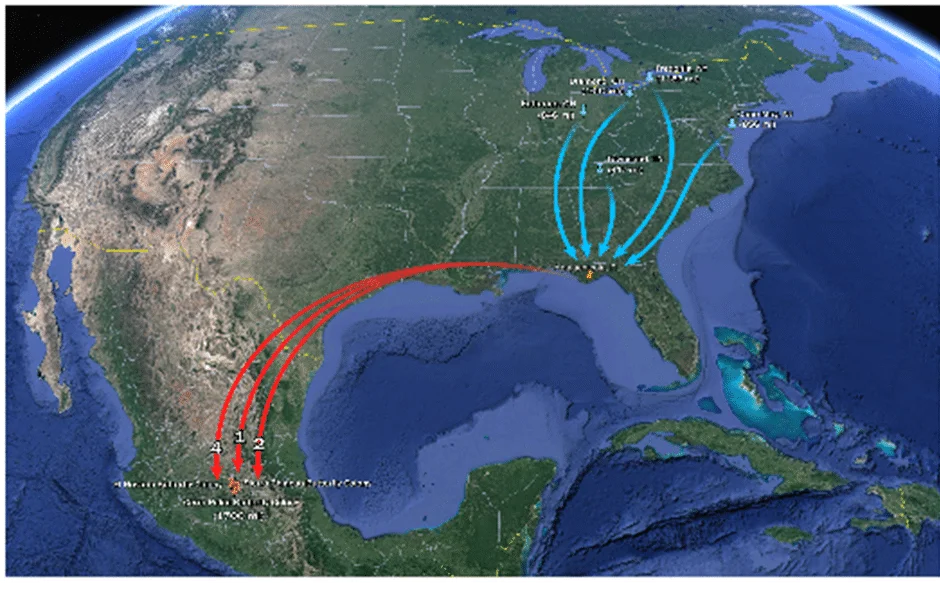
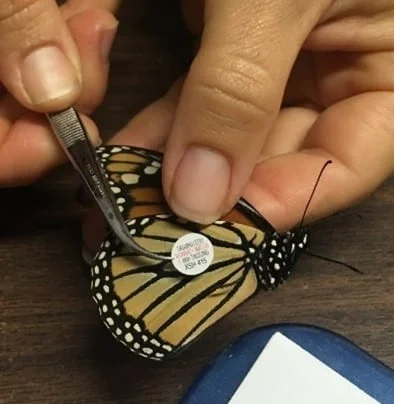
Sci-Café Connects Scientist to Users and Residents
The Reserve’s popular Sci-Café webinar program highlights the research and projects conducted in and around Apalachicola Bay. By collaborating with various researchers and land managers, the Reserve expands its capacity and supports the needs of external researchers. Sci-Café gives us a platform to share some of these projects.
We have hosted five Sci-Café webinars so far this year. Topics included:
- Franklin 98 Living Shoreline Update with Conservation Corps
- Prescribe Fire Use in Land Management
- Navigate the Waters of Resistance: Studying Marronage Through Underwater Archaeology at Prospect Bluff
- People of the Apalachicola: A Community-Driven Archaeology Project
- Riparian County Stakeholder Coalition: Balancing Needs on the Apalachicola River
- Investigating Hydrologic Alteration as a Driver of Shifting Forest Species Composition in the Apalachicola River Floodplain.
Webinar attendees ranged from community members, agency staff, university faculty and students, to land managers and non-profit organizations. All of the Sci-Café webinars are recorded and are available on the Friends of the Reserve website.
Upcoming Sci-Café programs will include an update on the Tate’s Hell restoration September 26th , Geology of Apalachicola Area October 24th , Update on the Apalachicola Bay Restoration November 15th, To register for a Sci-Café go to the Apalachicola Reserve website https://www.apalachicolareserve.com/events/
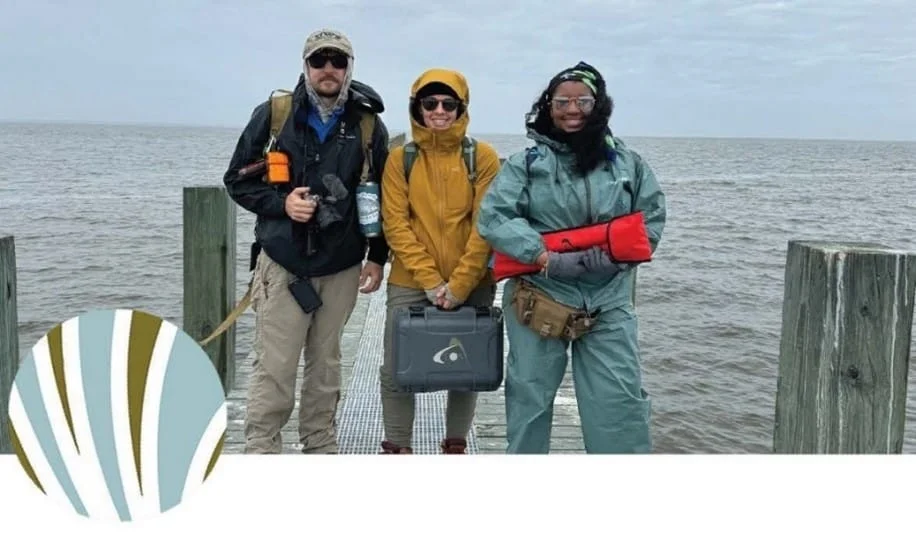
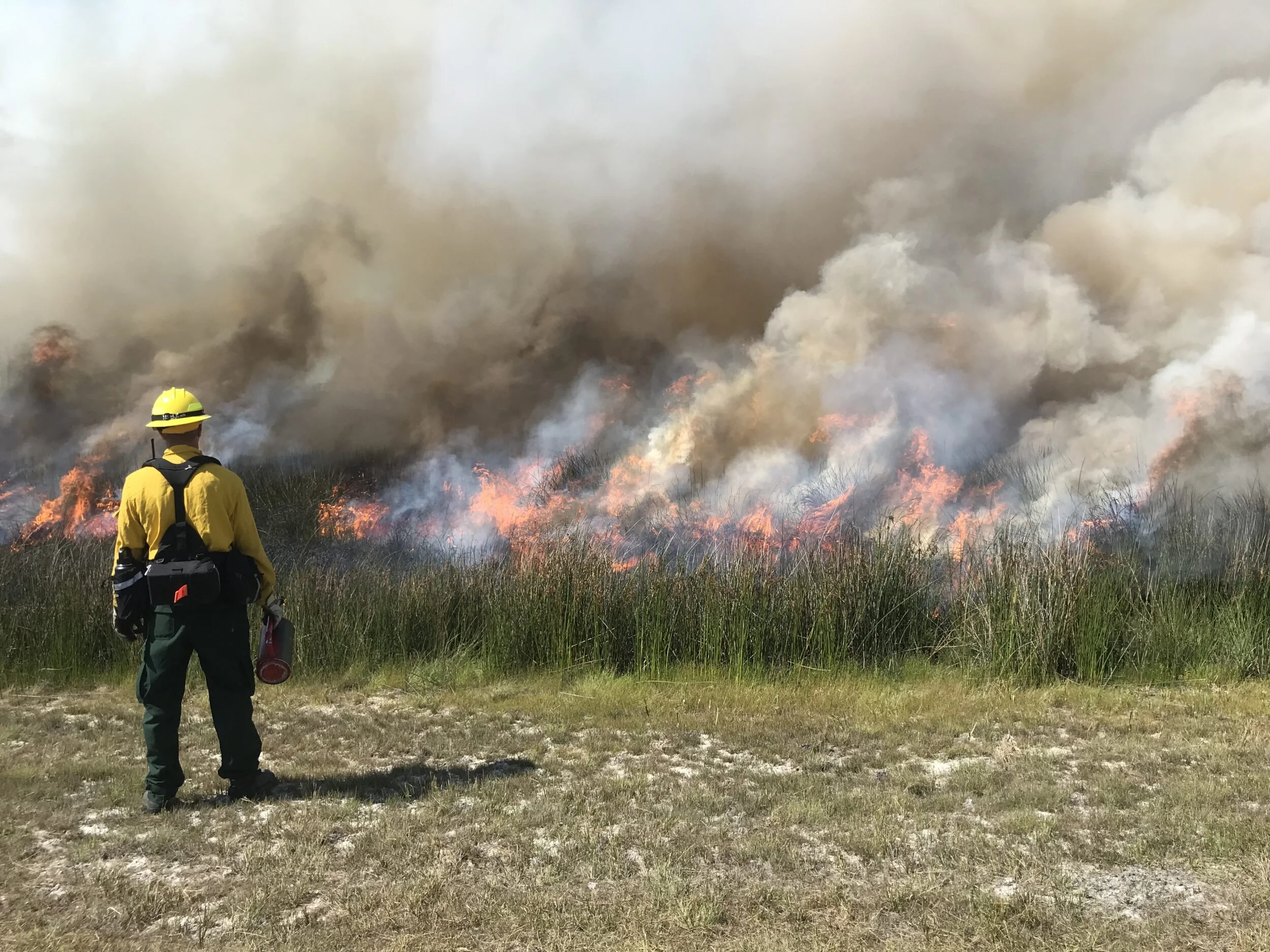
How Can the Reserve Really Helps Teachers?
Teachers need meaningful experiences for their students, and most of their time is confined to a classroom. This is the question that the Reserve education team asks themselves when designing teacher programs. Moreover, how do we answer that question through the lens of the watershed and our estuary. This July, a group of Georgia teachers from many disciplines could be seen sketching at the riverside, doing a water quality “health check” of the estuary using the same equipment that Reserve researchers use, charting their results, and writing poetry about the ecosystem. This was all done using the approach John Muir Laws advocates – nature journaling as a way of nurturing curiosity and rigorously observing the natural world. The nature journaling approach seeks to nurture curiosity and rigorous observation using words, pictures and numbers. Laws’ foundational structure uses the prompts – “I notice…”, “I wonder…”, and “It reminds me of…”. Along with these prompts, Laws also uses techniques such as zoom in and out on the subject. For instance, zoom in and draw just one blade of marsh grass and then zoom out to draw the grass in the context of the marsh itself.
The Apalachicola Reserve collaborated with staff from the Rookery Bay National Estuarine Research Reserve to enable the team to think more creatively and respond to the visiting teachers more personally. In the words of the teachers:
“From the opening activities at the nature center to the journaling and poetry activities in the river and bay, I found new inspiration for my teaching.”
“I teach 5th grade math and look forward to using data about marine research to help my students learn about graphing, reading data, and interpreting data (finding patterns). Being able to give them a real-life connection to understand the data will make it more meaningful and will likely stick with them after they leave my classroom. Showing them the pictures, I took personally of us taking measurements makes the numbers on a piece of paper come alive!”
Finally, in the words of John Muir Laws himself, “This is amazing feedback. What you are doing is needed and important. Please let me know how I can support your project.”
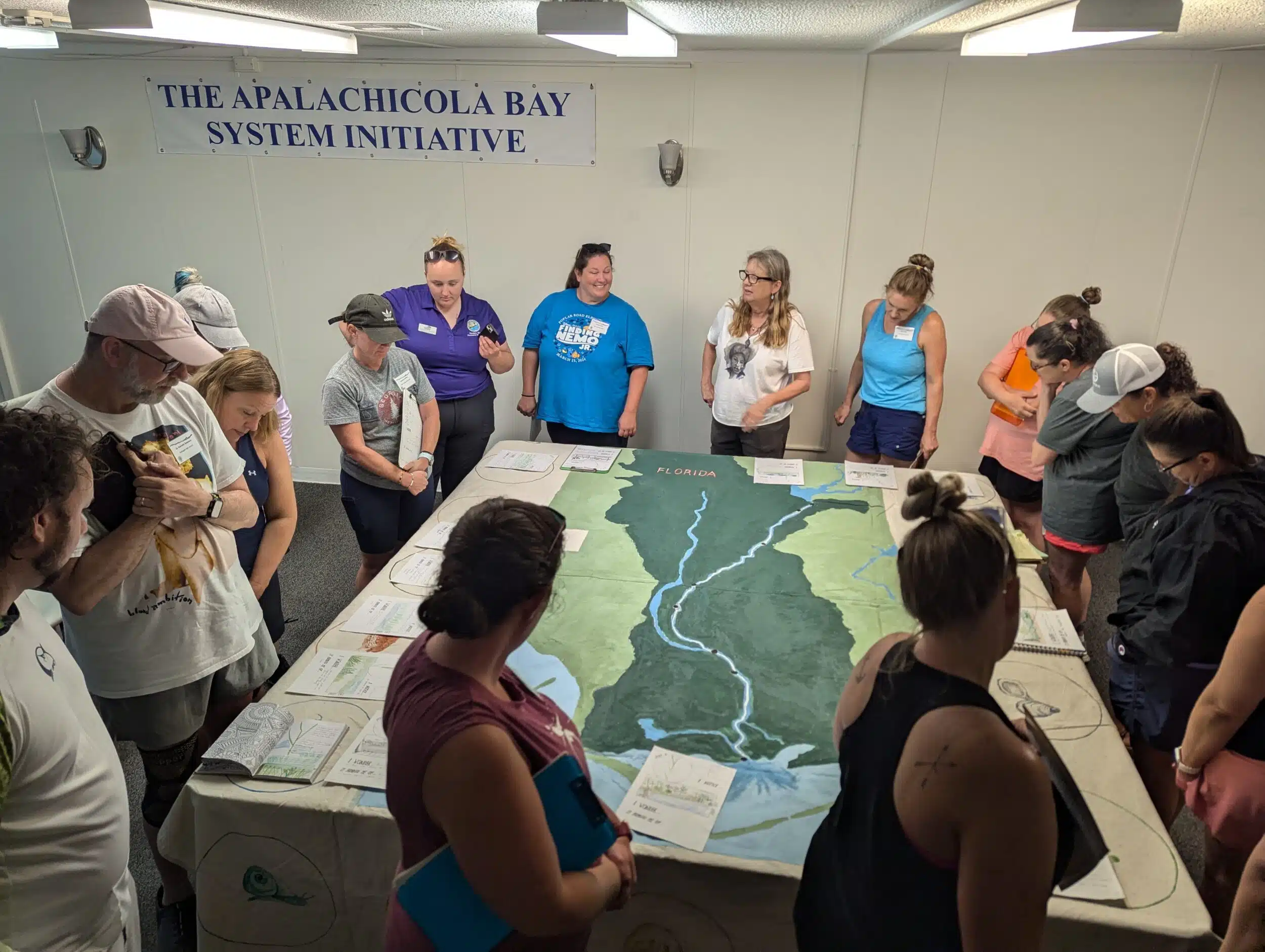
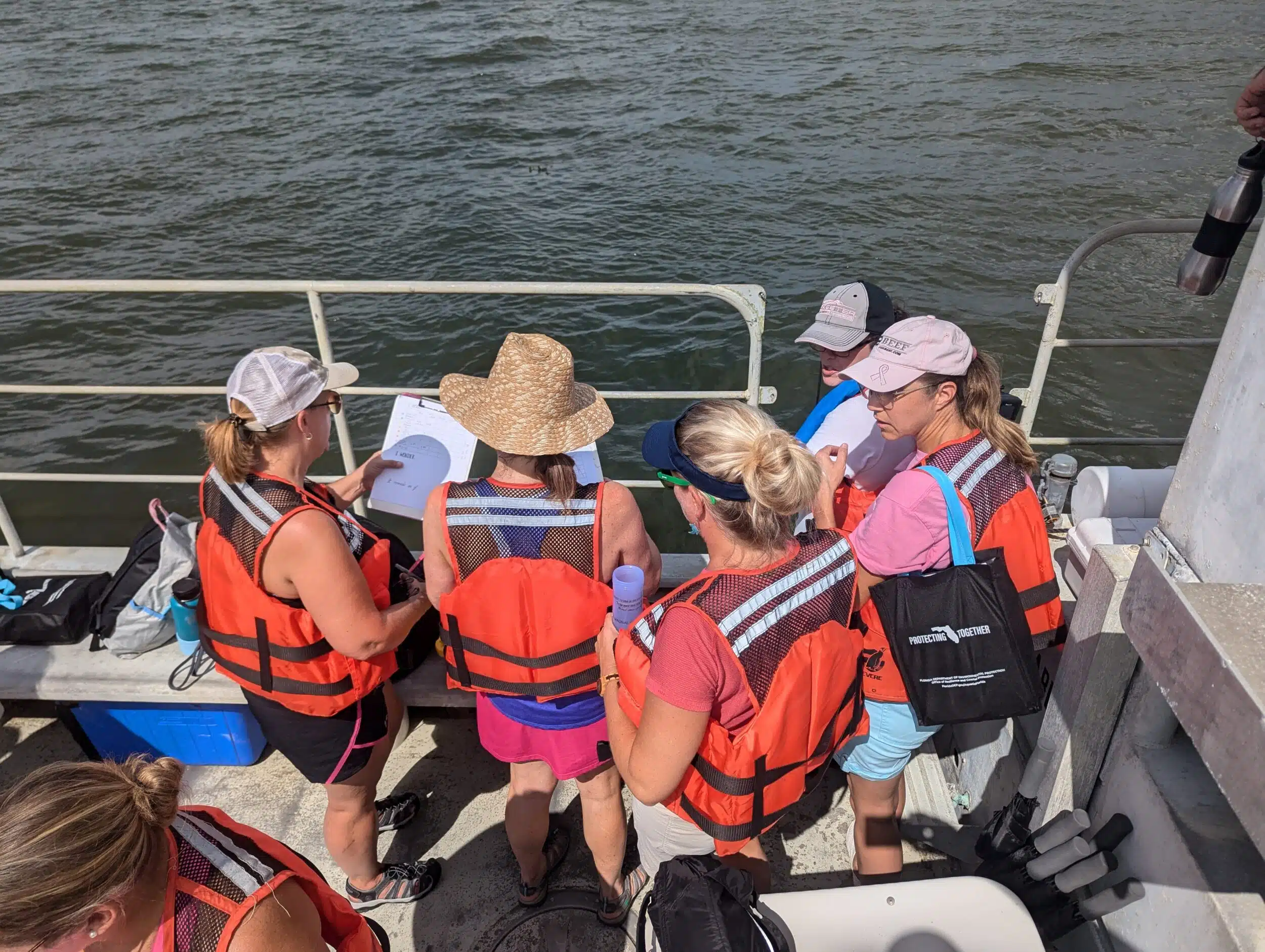
Visiting Students Learn About the Marine Biology Profession
Two university groups recently visited the Apalachicola Reserve. One group of future marine biologists came from the University of Southern Mississippi. Meg Christopher and Lena Kury from the Central Panhandle Aquatic Preserves office showed them the reality of being a marine biologist. Images of their work wading through marshes was not reminiscent of a scene from The Little Mermaid, but their presentation about living shorelines, seagrass and oyster restoration was certainly honest and inspiring to the classes. Volunteer Coordinator, Dr. Donna Knutson, presented an update on the St George Island sea turtle monitoring program. Dr. Campos, from FSU, also brought students to the reserve from the Student Support Services (SSS) program, one of the eight federally funded TRIO programs designed to improve student retention, graduation, financial literacy, and overall academic performance.
